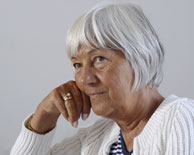The History of Horses & Racing
5/1/2024
Overview
Join Active Minds for a look at the history of horses including one of the most extraordinary examples of the breed--the thoroughbred racehorse. We will begin with horse domestication and their use in agriculture, the military, and other arenas, explore the central role of horses in Native American life, meet some of the greatest racehorses, discuss efforts to protect horses’ welfare, and explore their intelligence.
Key Lecture Points
- Horses have played a pivotal role in the history of human society for thousands of years. The close relationship between humans and horses has changed both species. People have created dozens of breeds in order to make horses faster, stronger, bigger or smaller. The way people travel, trade, play, work and go to war have all been shaped by the use of horses. Although horses no longer carry soldiers into battle or pull ploughs, the bond between humans and horses is still strong for companionship, recreation and sport.
The prehistoric horse species evolved in North America and from there crossed to Asia, Africa and Europe. About 12,000 years ago, horses became extinct in North and South America, but survived in Eurasia and Africa. Evidence of wild horses can be found in the Neolithic cave art of Southern France. The horse was first domesticated about 5,500 years ago on the steppes of present-day western Kazakhstan. - Since the earliest times, horses have played vital roles in war, transportation and agriculture. Ironically, they were essential to the progress of the Age of Industrialization in the 19th century. From the Pony Express to pulling steam fire engines and streetcars to working in the mines and fighting in WWI, people depended on horses.
- People have been racing horses since the Ancient Greeks, but the professional sport of horseracing as we know it today, dates back to England and the reign of Queen Anne in the 18th century. The thoroughbred horses around the world today are all descended from 3 Arabians brought to England in the early 1700s.
- Native Americans acquired horses after the Spanish explorers brought them back to North America. Horses became central to the way of life of the indigenous peoples of the American Southwest and Great Plains, enabling them to hunt, fight and move efficiently. Seizing and killing horses was a key tactic in efforts to force Native Americans to abandon their traditional way of life and move to reservations.
- Early British settlers brought horseracing to America, but it did not become an organized sport until after the Civil War. The most famous races in the US are the Kentucky Derby, the Preakness Stakes and the Belmont Stakes—the Triple Crown. Only 13 horses have been Triple Crown winners, the last one was Justify in 2018. Horse racing has declined in popularity in recent years, due to competition from other gambling opportunities and concerns about the welfare of racehorses. But events like the Triple Crown races still draw big crowds and millions of dollars in wagers. The 150th Kentucky Derby will be run on May 4, 2024.
Discussion Questions
- Describe the role horses have played in human history to include war, commerce, and sport.
- What are the major animal-welfare issues involving horses today?
- Why do you think there is such a special bond between horses and humans?
- Are you a horseracing fan? What do you enjoy most about the sport?
More to Explore
- History of Horses Click here
- Kentucky Derby Click here
- Horses in the West Click here
Books For Further Reading
- Langrish, Bob and Judith Dutson. Horse Breeds of North America (paperback). Storey Publishing, 2006. 204 pages. Photos and descriptions of 96 breeds.
- Nack, William. Secretariat. Hyperion Books, 2010. 455 pages. The story of Triple Crown champion Secretariat—the only non-human chosen as one of ESPN’s “50 Great Athletes of the Century.”
- Hillenbrand, Laura. Seabiscuit: An American Legend. (paperback) Random House Publishing Group, 2003. The underdog story of the horseracing icon, Seabiscuit.
- Nir, Sarah Maslin. Horse Crazy. Simon & Schuster, 2021. 304 pages, An entertaining memoir of one woman’s obsession with horses that also explores why people and horses have such a close relationship.






Copyright © 2004-2025 Active Minds®. All rights reserved.
